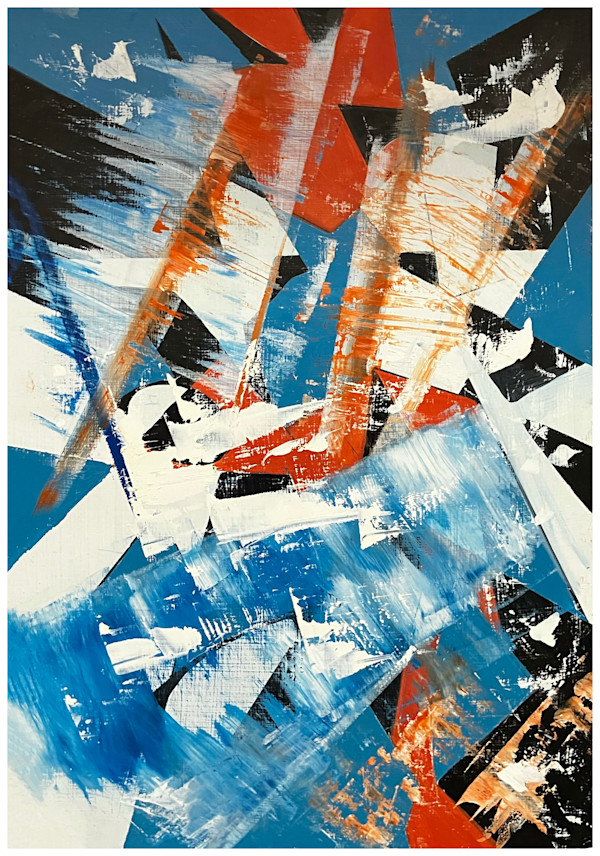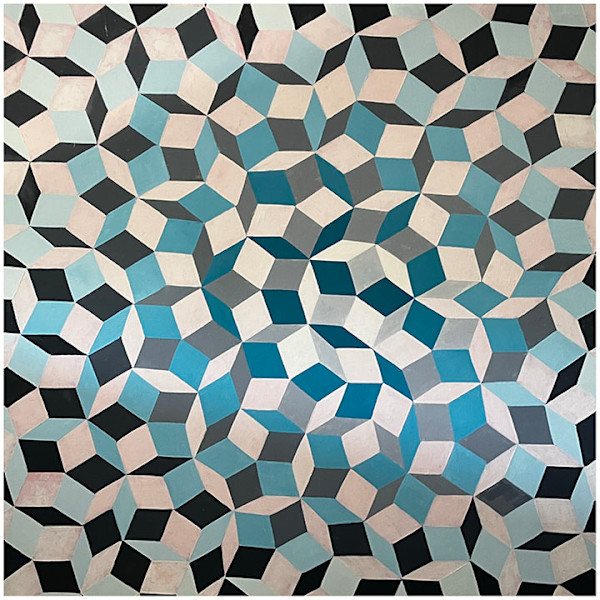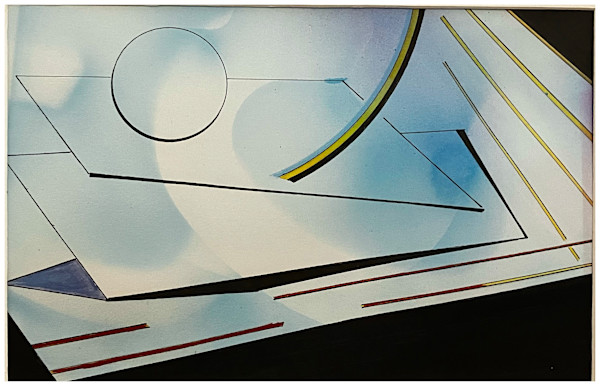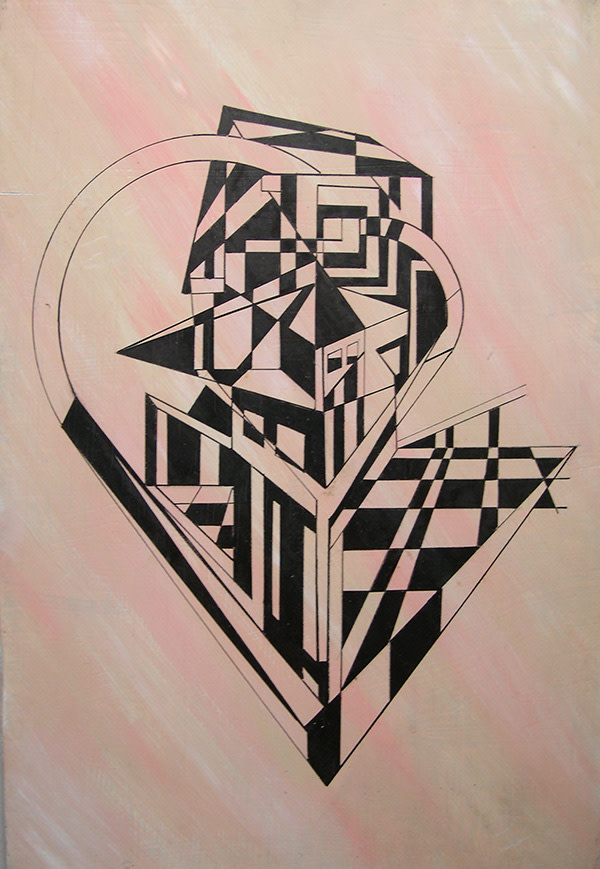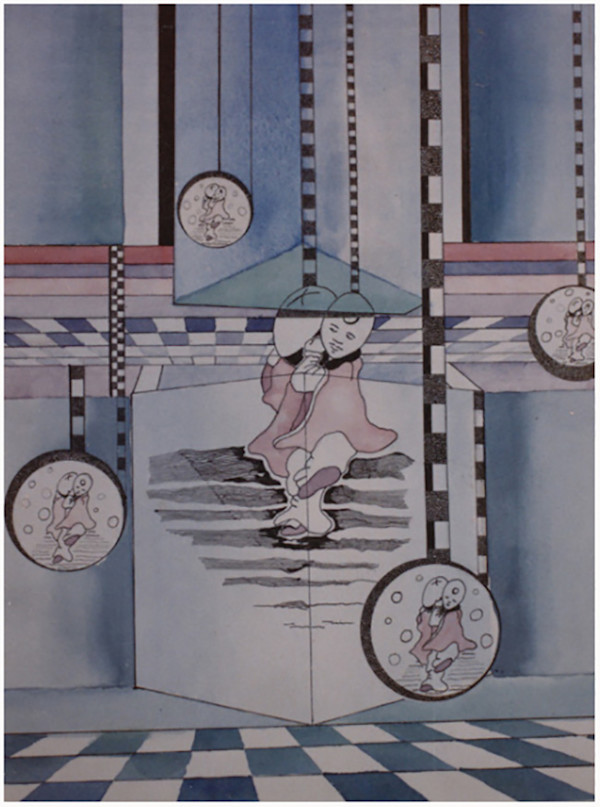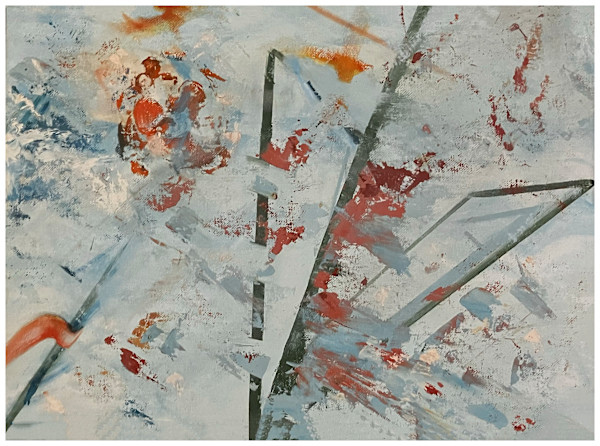Selected for publication in 1986 Edition of the Encyclopedia of Living Artists in America.
This drawing/painting was also known at Plato's Cave when created. Like many artists, at that time I thought Plato was talking about artistic creativity when he introduced the Allegory of the Cave in the Republic. I removed the Plato reference many years later when I realized that he had actually banned the artists from his Republic, disdaining their ability to convince people that mere “illusions,” were actually the Truth.
His Cave image is where Socrates describes a group of people who have lived chained in a cave all of their lives, facing a blank wall. They spend all of their time watching shadows projected on the wall in front of them. These images were not real, but were formed by things passing behind a wall and were objects held by moving people. A fire between the prisoners and the wall created the shadows of the moving objects. In time, these prisoners began to assume the shadows were real because, according to Socrates, the shadows were as close as the prisoners would ever get to viewing reality.
Socrates then explains how the philosopher is like a prisoner who is freed from the cave and comes to understand that the shadows on the wall do not make up reality at all. This is because the philosopher can perceive the true form of reality rather than the mere shadows seen by the projected shadows of things they do not perceive as shadows because of their chained status.
There are two sections of the story that stand out in my mind many years later. One is the commentary on those who see the fire and mistake it for the sun, as some do. These are the ones who seek only so far. Because they fail to continue to explore, they never discover the actual sun.
The second is what Socrates says about the man who escapes and returns to tell the others of another world. He came to represent how easily people become wedded to their ideas, for the prisoners decided that he was crazy, and those who leave the Cave were likely to suffer the same fate.
- Collections: Monochromatic, Timeline: Before 1990


